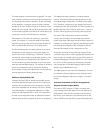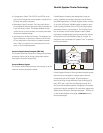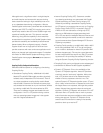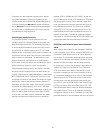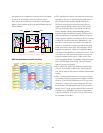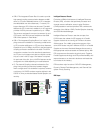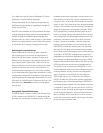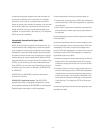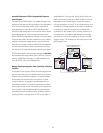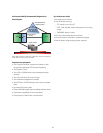38
LPAR CPU Management
LPAR CPU Management allows WLM working in goal
mode to manage the processor weighting and logical
processors across an LPAR cluster. CPU resources are
automatically moved toward LPARs with the greatest need
by adjusting the partition’s weight. WLM also manages
the available processors by adjusting the number of logi-
cal CPs in each LPAR. This helps optimize the processor
speed and multiprogramming level for each workload,
helps reduce MP overhead, and helps give z/OS more
control over how CP resources are distributed to help meet
your business goals.
z/OS 1.2 enhances the LPAR CPU management capa-
bilities and will allow the dynamic assignment of CPU
resources to non-z/OS partitions outside the z/OS LPAR
cluster such as Linux or z/VM.
Dynamic Channel Path Management
In the past, and on other architectures, I/O paths are
defi ned with a fi xed relationship between processors and
devices. With z/OS and the zSeries, paths may be dynami-
cally assigned to control units to refl ect the I/O load. For
example, in an environment where an installation normally
requires four channels to several control units, but occa-
sionally needs as many as six, system programmers must
currently defi ne all six channels to each control unit that
may require them. With Dynamic Channel Path Manage-
ment (DCM), the system programmer need only defi ne the
four channels to the control units, and indicate that DCM
may add an additional two. As the control unit becomes
more heavily used, DCM may assign channels from a pool
of managed channels, identifi ed by the system program-
mer, to the control unit. If the work shifts to other control
units, DCM will unassign them from lesser utilized control
units and assign them to what are now the more heavily
used ones. DCM is for ESCON and FICON Bridge chan-
nels and can help reduce the number of channels required
to effectively run a workload. DCM can also help reduce
the cost of the fi ber infrastructure required for connectiv-
ity between multiple data centers. On a z990 with Logical
Channel SubSystems (LCSSs), the scope of DCM man-
agement is within a Logical Channel SubSystem. Although
an LPAR cluster can span LCSSs, when DCM is used it will
only consider systems in the same LPAR cluster and the
same LCSS.
Channel Subsystem Priority Queuing
The notion of I/O Priority Queuing is not new; it has been in
place in OS/390 for many years. With IRD, this capability
is extended into the I/O channel subsystem. Now, when
higher priority workloads are running in an LPAR cluster,
their I/Os will be given higher priority and will be sent to
the attached I/O devices (normally disk but also tape and
network devices) ahead of I/O for lower priority workloads.
LPAR priorities are managed by WLM in goal mode.
Channel Subsystem Priority Queuing provides two advan-
tages. First, customers who did not share I/O connectivity
via MIF (Multiple Image Facility) out of concern that a lower
priority I/O intensive workload might preempt the I/O of
higher priority workloads, can now share the channels and
reduce costs. Second, high priority workloads may even
benefi t with improved performance if there were I/O con-
tention with lower priority workloads. Initially, Channel Sub-
system Priority Queuing is implemented for Parallel OEMI
and ESCON, FICON Bridge and native FICON channels.



